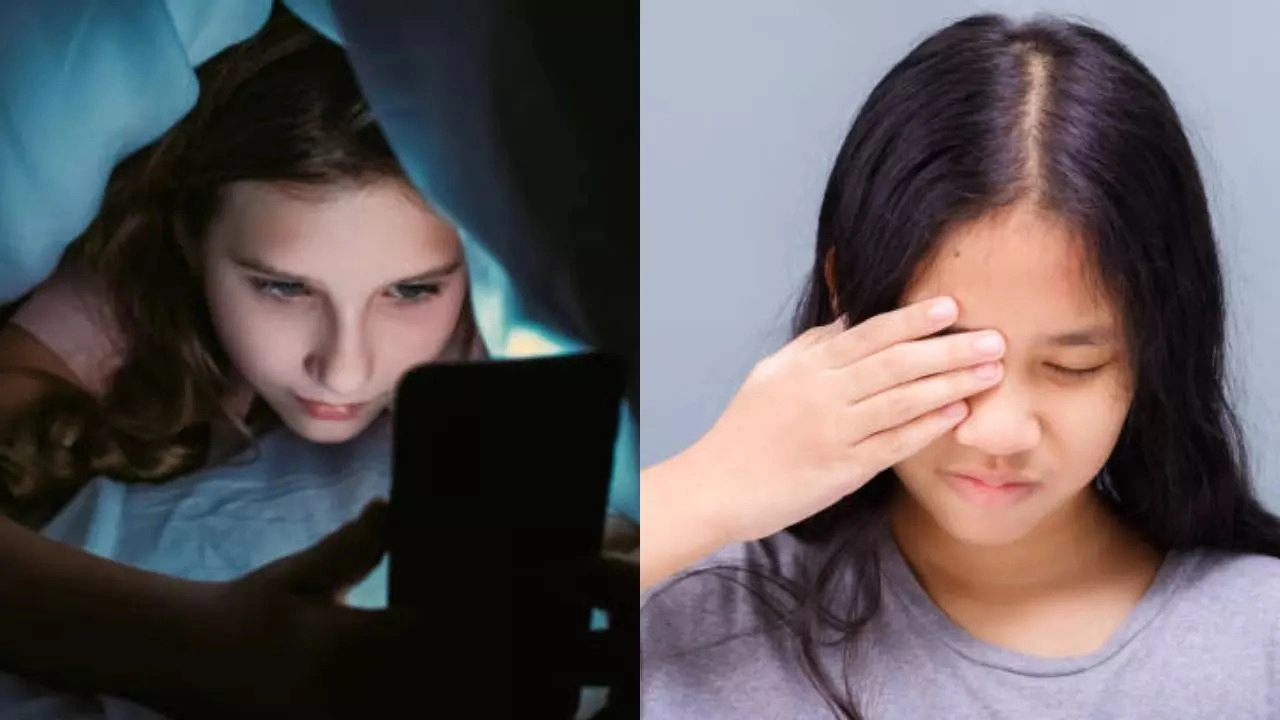Pallavi Mehra • 28 Oct 2024
How Blue Light And Air Pollution Are Putting Children's Eyes At Risk - Expert Shares Strategies To Manage

How Blue Light And Air Pollution Are Putting Children's Eyes At Risk (Image Credits: iStock)
As screen time increases and air pollution becomes more prevalent, children's eye health is at greater risk than ever before. Two major factors contributing to this growing concern are blue light exposure from digital devices and the harmful effects of air pollution. With children spending more time on screens for both learning and entertainment, and air quality deteriorating in metro cities, parents need to be aware of the negative effects these factors have on young eyes.
Dr Neeraj Sanduja, MBBS, MS, an Ophthalmologist and Eye Surgeon at Viaan Eye and Retina Centre, shares strategies to protect children's eye health.
The Impact of Blue Light on Children’s Eyes
Blue light, a part of high-energy visible light, is emitted from digital screens such as smartphones, tablets, computers, and televisions. While blue light is naturally present in sunlight and plays a role in regulating our sleep-wake cycle, overexposure to blue light from screens can be harmful, particularly for children.
“Children are more vulnerable to blue light exposure because their retinas are thinner compared to adults,” shares Dr Sanduja. "This makes them more susceptible to damage from prolonged screen time."
Research suggests that blue light can cause digital eye strain, with symptoms like blurry vision, dry eyes, headaches, and difficulty focusing. “Children often don't recognize or express these symptoms,” says Dr Sanduja. "This can negatively impact their academic performance and overall well-being."
Further, studies show that prolonged blue light exposure throughout life can increase the risk of developing macular degeneration, a condition that can cause vision loss as people age.
How Is Air Pollution Affecting Your Child’s Eye Health?
Air pollution is another major environmental factor impacting children’s eye health. Pollutants such as particulate matter (PM), nitrogen dioxide (NO2), and ozone (O3) can irritate the eyes and exacerbate conditions like allergic conjunctivitis, which leads to inflammation and discomfort.
“Children are more affected by air pollution because they breathe more rapidly and their bodies are still developing,” Dr Sanduja explains. “This increases their exposure to harmful pollutants, which can trigger allergic reactions and eye irritation.”
Recent studies also suggest that chronic exposure to air pollution may contribute to the development of myopia (nearsightedness), a growing concern in children’s eye care. Myopia can affect a child’s ability to see distant objects clearly and may worsen over time if not addressed.
The Combined Threat of Blue Light and Air Pollution
Children living in urban areas often face a dual threat: increased screen time and higher exposure to air pollution. As parents try to protect their children from poor air quality by keeping them indoors, they may unintentionally increase their exposure to blue light from screens.
“This creates a vicious cycle,” Dr Sanduja notes. “Children are spending more time indoors using digital devices to entertain themselves, which leads to greater blue light exposure and puts further strain on their eyes.”
Practical Strategies to Protect Children’s Eye Health
Given these challenges, parents, teachers, and health experts need to take proactive steps to protect children’s eyes from the harmful effects of blue light and air pollution. Dr Sanduja offers several strategies to mitigate these risks:
- Limit Screen Time
"Parents should set clear rules about screen time," advises Dr. Sanduja. The American Academy of Pediatrics recommends that children aged 2 to 5 years should have no more than one hour of screen time per day. For older children, it’s important to encourage regular breaks and set time limits.
- Use Blue Light Filters
Many digital devices have a blue light filter setting that reduces the amount of blue light emitted. "Turning on this feature, especially in the evening, can help limit exposure before bedtime," says Dr. Sanduja. Additionally, blue light-blocking glasses can provide extra protection for children who spend extended periods on screens.
- Follow the 20-20-20 Rule
To reduce digital eye strain, Dr Sanduja recommends the 20-20-20 rule: “Every 20 minutes, children should take a 20-second break and look at something 20 feet away.” This simple habit can help prevent eye fatigue and strain.
- Encourage Outdoor Play
Outdoor activities offer numerous benefits, including reducing the risk of developing myopia. "Spending time outside, especially in green areas, has been shown to lower the chances of myopia in children," explains Dr. Sanduja. Physical activity also promotes overall health and well-being.
- Monitor Air Quality
Parents should be aware of the air quality in their area, especially in urban environments. “On days with poor air quality, it’s best to avoid outdoor activities, especially during peak pollution times,” says Dr Sanduja. Using air purifiers indoors can also help reduce exposure to pollutants.
- Regular Eye Check-ups
Dr. Sanduja stresses the importance of regular eye exams for children. “Early detection of eye issues can prevent long-term damage,” he says. Eye care practitioners can monitor children's eye health and provide advice on how to mitigate the effects of blue light and pollution.
Get Latest News Live on Times Now along with Breaking News and Top Headlines from Health and around the world.